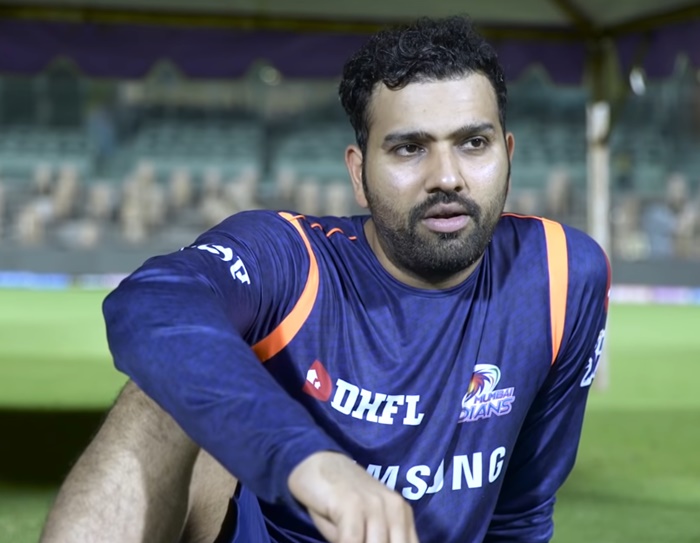
Okay, first of all, let it be known that we’ve taken an editorial position on something. We’ve decided to refer to each season of the IPL by what number IPL it is rather than the year in which it took place.
Our reasoning is this: who honestly knows what year it is?
The argument you’re about to make is that we’re hardly likely to know what IPL season it is either. This is true, but we’re also much less likely to hazard a guess. In short, there’s more chance of getting our labelling right if we’re forced to look things up.
Now, on with business. We were very interested to see that Mumbai Indians finished atop the IPL table because the Mumbai Indians are the focus of the Netflix documentary, Cricket Fever, and in that series, they’re rubbish.
So how have they gone from being rubbish to being not rubbish? Thankfully, the wonders of social media ‘content’ have provided us with the answer even before series two of Cricket Fever has come out. (Are they making one?)
We’ve trawled through the Mumbai Indians YouTube channel to get you the inside story.
This is the inside story
Captain Rohit Sharma gave three main reasons why Mumbai Indians have been successful this year. We think you’ll agree that these are qualities unique to Mumbai Indians and no other sports team in history.
- They’ve put in a lot of effort
- They’ve responded well to pressure situations
- Everyone has come together and “chipped in”
This is a bit more of the inside story
We also got an insight from Shane Bond.
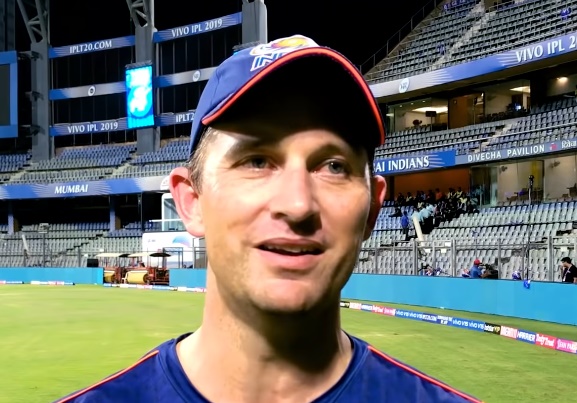
Explaining the huge influence of the coaching staff, Bond said: “I think you’ve got to trust your players; trust that if the ball is there to hit, they will go out and smack it, and if it doesn’t work out, it doesn’t work out. But from our point of view, it worked out, so that’s great.”
Remember how our second-favourite thing about Cricket Fever was Mitchell McClenaghan popping up behind Ishan Kishan in the pool and scaring him?
Well, it was.
Go and read that article now and then come back here for the big finish.
The big finish
Here’s what Mitchell McClenaghan looks like when he’s underwater and he’s doing one of those modern hands things that people for some reason do when you point a camera at them these days.


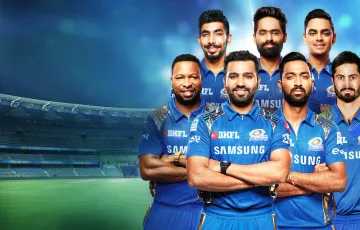
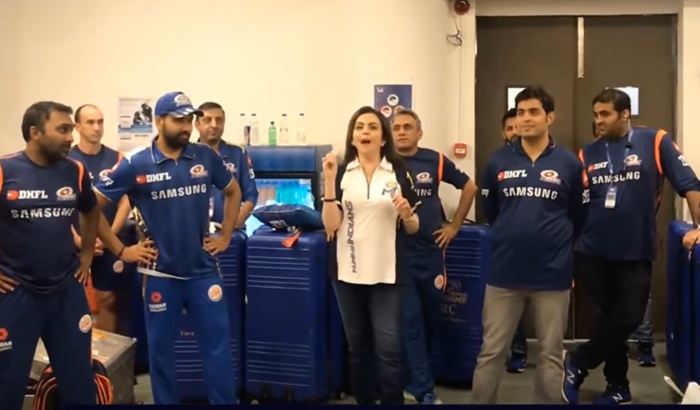
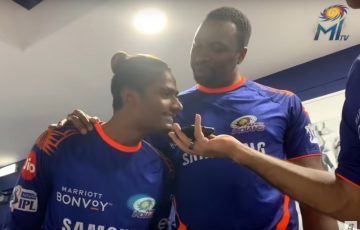
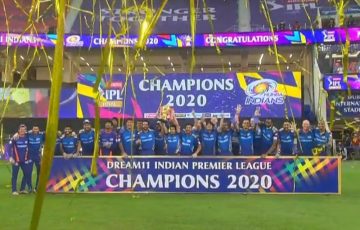
“If the ball is there to hit, they will go out and smack it, and if it doesn’t work out, it doesn’t work out. But from our point of view, it worked out, so that’s great.”
Modern cricket coaching. That will be five jillion squillion dollars please.
The trick is to get them into a frame of mind where they are relaxed and willing to try and smack it even though it ultimately might not work out.
This isn’t a joke. That’s actually quite a hard thing to do.
But also to ensure they know when to smack it and when not to smack it. To know when settling for 220 is better than aiming for 400 and ending up with 150.
Is that a Kenny Rogers verse?
Could it possibly be that the difference between the two outcomes is within the random variation possible in shits and giggles cricket and doesn’t actually arise from anything that the players do especially reliably? Top of the table = 9 wins out of 14 – two more than average; bottom of the table = 5 wins out of 14 – two less than average. Resultant hypothesis: it is just random slogging on small parks with bug bats. It is just the artificial excitement of hitting the ball in the air a lot. If you plotted dropped catches, it would be just as good a table and give the same answer. Rubbish is what it is. Full of sound and fury. Signifying nothing.
Many people who are dismissive of T20 think that and they think that because it is not out-and-out wrong. There is a big element of that but there are also plenty of non-random elements.
Chennai Super Kings have made the play-offs every year they haven’t been suspended. They have been champions three times out of nine and runners-up four times out of nine.
The top three teams this year got nine wins. Fair enough. The next three for six wins. Fair enough. The bottom two got five wins and had a game rained off. So after 56 games of slogging, the difference between fourth and last might have been a bit of rain.
The story is that batting is meaningless if it doesn’t matter if you get out. A team of professionals should hardly ever be bowled out in 20 overs. Hell, I am a club duffer and we play more overs than that. The shorter the game, the less likely it is that the best team will win. We haven’t even started to talk about the influence of the toss.
I don’t say that it is not fun for kids to watch and for bookies to make a mint over but it isn’t meaningfully recognisable as the game of cricket. Does anyone really care about any of the results? Really?
@mongoose That is true in T20 from the point of view of batsmen. But good bowling almost always has a deterministic outcome no matter what the format of the game.
Have I propounded my dice theory before, which may or may not be original? In T20, bother teams roll a standard six sided die (a d6 in D&D parlance). A very good team gets to add 1 to their score, a very bad team subtracts one. A plus one team will win more than they lose, but a 6 is as likely as a 1, they will also lose a lot. A cleverer person than I my demonstrate that this leads to something like Mongoose’s Distribution. 50 over sides rolls two dice (2d6) and add or subtract up to 2 or 3. There will still be some 2s and 12s rolled, but a lot more 7s where the modifier really counts. Test matches roll 3d6….. you can see where this is going.
Don’t you mean Botha sides at the start there?
To be fair to said gentleman, he did want to play for Botha countries
Any offers on coaches/managers/captains who actually give genuinely interesting or informative answers when asked these questions?
Although given the repetition and sheer volume of inane/banal questions they have to answer they probably ‘have’ to resort to cliches etc and essential nothing answers just to get through.
They’re all capable of good answers. It’s mostly about good journalists getting the time to ask a series of questions to get past the knee-jerk autopilot stuff.
They should hire me as assistant coach, I can bring a valuable strategy to the team: “Keep your eye on the ball”
May be giving away professional secrets, here….
http://www.espncricinfo.com/story/_/id/26688989/former-west-indies-batsman-seymour-nurse-dies-aged-85
I’m surprised how sad I was about this. I can’t even recall ever seeing footage of the man play, though I had been impressed by his stats, but most of all I’ve always loved that name. Could serve as the title of a British comedy film, or as a life motto, or as the punchline to a knock-knock joke.
I share your sadness. The first series I ever followed was West Indies in England in 1963, and to an eight year old armed with a transistor radio and imagination, the names were as captivating as the cricket. Seymour Nurse, Conrad Hunte, Rohan Kanhai – fantasy heroes to a man.
What a lovely post. The Windies have always done a great job at the whole naming thing.
Actual live cricket on the BBC! What times we live in. What cricket, I hear you ask? Well, from what I can see it’s a tri-series ODI and, most importantly of all judging by the information on screen, IT’S AN INNOVATE PRODUCTION FOR CRICKET IRELAND.
It’s also the Walton Second ODI powered by Seven Rings Cement, but this seems of secondary importance.
Best + O’Brien are an excitable but surprisingly enjoyable commentary duo.
Surely the difference is that in IPL12 (catchy!) Lasith Malinga could be seen by his teammates.
Yes, this is a big and less funny difference.
Why is no-one talking about Mitchell McClenaghan? Is it because you can’t be bothered trying to type his name?
Mitchell McClenaghan’s underwater hair quiff looks like a dark-haired version of Tintin.
Happy now, KC?
Fairly.
Sorry KC, I saw ‘IPL’ in the headline and my eyes glazed over.
Hold everything. The World Cup song is here.
http://www.espncricinfo.com/story/_/id/26698965/england-clear-first-world-cup-hurdle-releasing-tournament-song
Pffffft. It’s hardly going to be this, is it? https://www.kingcricket.co.uk/what-has-the-east-asia-pacific-region-ever-done-for-cricket-this/2014/11/22/
That warrants tweeting again.
He’s completely answered your question there, KC. What he said is that it is entirely random. One team will win because in the random collection of smacking the ball, it worked out more than for the others.
And that’s it. Not tactics, not relative skill, not bowling in the right areas – just that.
Why does no-one ever talk about smacking it in the right areas?
Sounds a bit racy for cricket.
Through the covers.